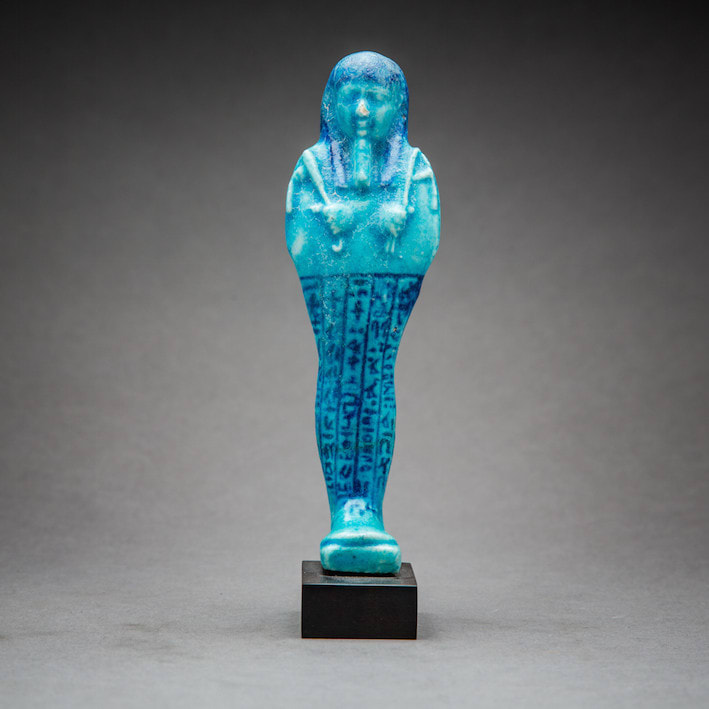Egyptian Faience Ushabti, 664 BCE - 525 BCE
Faience
height 15.2 cm
height 6 in
height 6 in
LK.007
Further images
The Ushabtis were funerary figurines placed in tombs among the grave goods and were intended to act as substitutes for the deceased, should he be called upon to do the...
The Ushabtis were funerary figurines placed in tombs among the grave goods and were intended to act as substitutes for the deceased, should he be called upon to do the manual labor in the afterlife. They were used from the Middle Kingdom (around 1900 BC) until the end of the Ptolemaic Period, nearly 2000 years later. The ushabtis were believed to magically animate after the dead had been judged, and work for the dead person as a substitute labourer in the field of Osiris.
Ushabti inscriptions often contain the 6th chapter of the Book of the Dead, translated as: “Illumine the Osiris NN, whose word is truth. Hail, Shabti Figure! If the Osiris Ani be decreed to do any of the work which is to be done in Khert-Neter, let everything which standeth in the way be removed from him-wether it to be plough the fields, or to fill the channels woth water, or to carry sand from the East to the West. The Shabti figure replieth: I will do it, verily I am here when thou callest”.
Perhaps no single object can epitomize the spirit of ancient Egypt better than the ushabti. This ushabti is shaped like a divine mummy. The hands hold two hoes, and the basket carried on the back recall the rural, agrarian culture of the land.
Ushabti inscriptions often contain the 6th chapter of the Book of the Dead, translated as: “Illumine the Osiris NN, whose word is truth. Hail, Shabti Figure! If the Osiris Ani be decreed to do any of the work which is to be done in Khert-Neter, let everything which standeth in the way be removed from him-wether it to be plough the fields, or to fill the channels woth water, or to carry sand from the East to the West. The Shabti figure replieth: I will do it, verily I am here when thou callest”.
Perhaps no single object can epitomize the spirit of ancient Egypt better than the ushabti. This ushabti is shaped like a divine mummy. The hands hold two hoes, and the basket carried on the back recall the rural, agrarian culture of the land.







